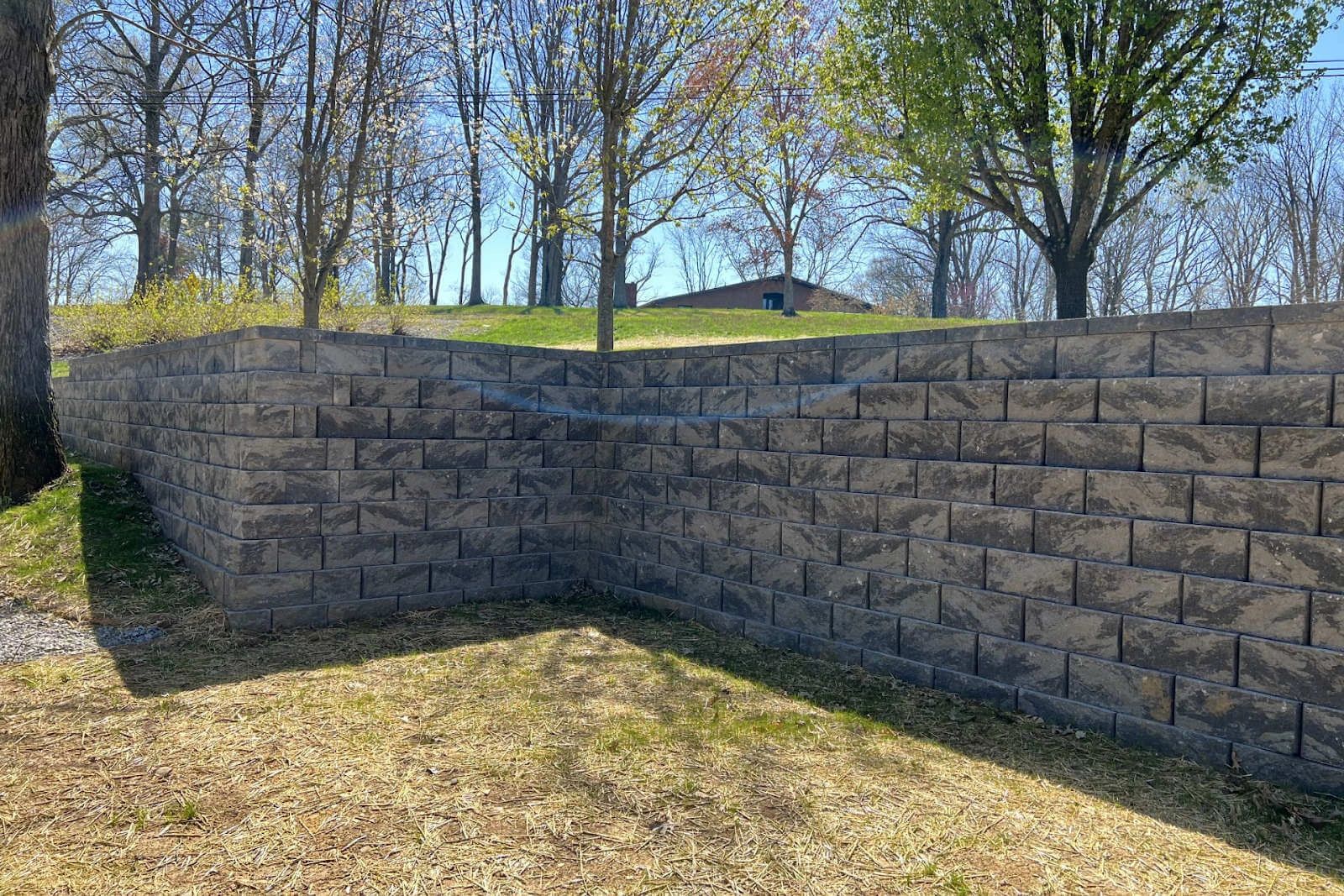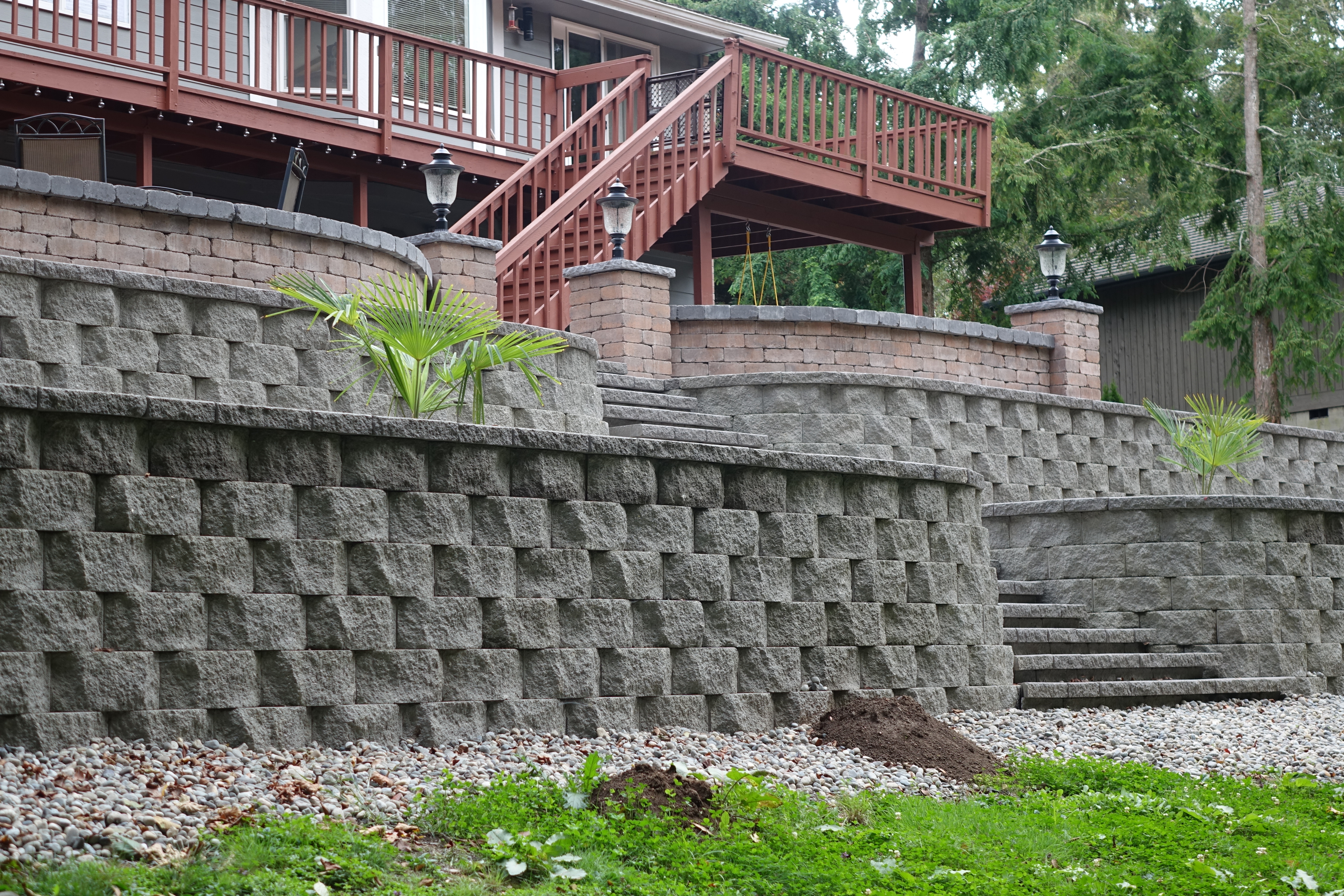What to consider when hiring an OKC Precision Retaining Walls contractor
What to consider when hiring an OKC Precision Retaining Walls contractor
Blog Article
The Crucial Guide to Understanding the Performance of Retaining Walls
When it comes to taking care of sloped landscapes, retaining walls are essential. What kinds of retaining walls are readily available, and exactly how do you pick the best materials?
What Are Retaining Walls and Their Objective?
Retaining walls are essential structures created to hold back dirt and stop disintegration, specifically on sloped landscapes. They give security to your home, guaranteeing that soil continues to be in position and protecting against possible landslides. When you think of a retaining wall, consider its duty in taking care of water runoff, which can erode dirt with time. Without these walls, you might face expensive damage to your landscape and structure.
Additionally, retaining walls can create usable areas in your yard. By leveling out a sloped area, you can gain extra useful exterior room for gardening, patio areas, or play locations. The style and materials you pick can enhance your residential property's visual appeals, making it visually appealing.
Eventually, comprehending the function of retaining walls helps you appreciate their importance in landscape administration (OKC Precision Retaining Walls). They not only shield your home however additionally add to the general charm and functionality of your outside area
Kinds of Retaining Walls: A Summary
When it comes to managing dirt and water overflow in your landscape, knowing the different types of retaining walls can help you make an informed selection for your property. Gravity walls rely on their weight to hold back dirt, making them a tough alternative for smaller sized inclines. Cantilever walls, on the various other hand, utilize a lever-like design, which enables them to support a lot more considerable loads with much less product.
Trick Products Utilized in Retaining Wall Building And Construction
To create a tough and reliable retaining wall, picking the best materials is important. You'll find that concrete is a preferred option as a result of its durability and toughness. Precast concrete blocks deal versatility in style, while poured concrete gives a seamless look. If you favor an even more natural look, rock or brick can add aesthetic allure and mix with the landscape.
Wood is one more option, specifically for smaller sized walls, yet keep in mind it might not last as long due to degeneration. Steel and gabion walls, which utilize cord mesh filled with rocks, are also effective for certain circumstances.

Style Considerations for Reliable Retaining Walls
Creating an effective retaining wall involves mindful factor to consider of a number of vital variables, as the wall must hold up against both vertical and lateral forces. Analyze the dirt type and its properties; natural dirts act differently than granular ones. You'll also intend to determine the elevation of the wall surface, as taller walls call for even more robust design remedies.
Following, take into consideration water drainage. Proper drainage protects against water buildup behind the wall surface, decreasing pressure and prospective failure. Incorporate weep openings or drain pipelines for effective water management.
Additionally, think of the materials you'll make use of. Various materials, like concrete, stone, or hardwood, deal differing staminas and aesthetic appeals.
Finally, do not forget regarding local regulations and codes. They commonly determine layout criteria and construction techniques. By addressing these factors to consider, you can assure your retaining wall surface is not only practical yet also resilient and safe.
Applications of Retaining Walls in Landscaping and Building And Construction
Retaining walls serve an important role in both landscape design and construction, as they assist take care of adjustments in altitude and prevent soil disintegration. In landscaping, you can utilize them to produce stunning terraced yards, allowing you to maximize your exterior area while including visual rate of interest. They additionally help specify areas, such as pathways or blossom beds, improving your landscape's total design.
In building and construction, retaining walls provide security to structures improved sloped land, assuring safety and longevity. They're usually used in highways and commercial residential properties to take care of earth activity Click This Link and drainage efficiently. By stopping dirt from moving, retaining walls safeguard foundations and preserve the stability of your structure tasks.
Whether you're looking to improve visual allure or warranty structural stability, retaining walls offer practical solutions that can substantially profit your landscape and building and construction ventures. Accept their versatility to achieve both visual and practical objectives.
Upkeep Tips for Long-Lasting Retaining Walls
To keep your retaining walls in wonderful shape, regular inspections and prompt fixings are important. You likewise need to ensure proper drainage options to protect against water buildup, which can weaken the structure. Ultimately, managing plants around the walls will certainly assist maintain their stability and prolong their lifespan.

Routine Maintenances
While you may assume your retaining wall can stand solid on its very own, normal inspections and timely fixings are vital for its durability. Look for any type of moving in the dirt surrounding the wall, as this can suggest much deeper problems. By being aggressive concerning evaluations and repair work, you'll ensure your retaining wall surface stays tough and functional for years to come.
Proper Drain Solutions
Efficient drainage is essential for keeping the honesty of your retaining wall surface, as water accumulation can lead to significant architectural concerns. To ensure correct drainage, install weep openings at normal periods along the wall surface. By carrying out these services, you'll boost the durability and stability of your retaining wall, securing it against possible damage created by water build-up.
Greenery Management Strategies
Healthy and balanced vegetation can play a crucial role in the long life of your retaining wall surface. Start by choosing ingrained plants that aid stabilize the soil without causing pressure on the wall surface.
Maintain the greenery trimmed to stop excess weight and keep proper drain. It's important to prevent overwatering, as extreme dampness can deteriorate the wall surface's foundation. Furthermore, take into consideration making use of compost to preserve dirt dampness while subduing weed development. By applying these vegetation administration strategies, you'll support your retaining wall's longevity and enhance the bordering landscape's beauty.
Usual Issues and Solutions for Retaining Walls
When it concerns retaining walls, soil disintegration and water drainage problems can read more create major frustrations. You need to guarantee your wall is effectively created to stop erosion and has an efficient drain system in position. Let's explore some usual problems and their solutions to keep your retaining wall tough and useful.
Soil Erosion Prevention
Soil disintegration can be a considerable difficulty for retaining walls, specifically if not effectively dealt with. When dirt wears down, it can threaten the wall surface's stability, leading to potential failings. By taking these positive actions, you can significantly improve the longevity and efficiency of your retaining wall against dirt disintegration.
Drain System Significance
A trustworthy drain system is important for the efficiency and durability of retaining walls. Without proper drainage, water can accumulate behind the wall surface, developing extreme pressure that could lead to architectural failing. You might notice protruding or cracking, which signifies the requirement for immediate focus. To avoid these issues, think about setting up weep openings, which enable water to escape, or a perforated drainpipe that reroutes water far from the wall. Consistently examine for clogs in your drain system, as particles can prevent its efficiency. Maintaining proper drain not only shields your retaining wall but likewise guarantees the surrounding landscape stays steady. By remaining positive, you can prevent expensive repair work and extend the life of your retaining wall.
Regularly Asked Inquiries
Just How Do Retaining Walls Affect Drainage Solutions?
Retaining walls can significantly affect water drainage systems by redirecting water flow. They prevent soil disintegration and manage groundwater levels, guaranteeing security. If you're preparing building, take into consideration how they'll engage with your drain layout for perfect results.
Can Retaining Walls Be Set Up on Slopes?
Yes, you can set up retaining walls on inclines. They assist support the soil and avoid disintegration. Just ensure appropriate water drainage and select the right materials to deal with the stress from the dirt behind the wall.
What Is the Life-span of a Common Retaining Wall?
A normal retaining wall lasts around 20 to 50 years, depending on products, maintenance, and ecological conditions. You should frequently examine it to guarantee its durability and attend to any kind of issues quickly to stay clear of pricey repair work.
Are Allows Required for Building Retaining Walls?
Yes, you typically require licenses for building retaining walls. Inspect your neighborhood building regulations and laws to assure compliance. It's important to safeguard the right permissions prior to starting your task to prevent potential penalties or concerns.
Exactly How Do Retaining Walls Effect Residential Property Value?
Retaining walls can favorably affect your residential or commercial property value by boosting visual appeals, preventing erosion, and developing go to website useful outside area. OKC Precision Retaining Walls. They also show good land management, making your property more enticing to potential buyers on the market
Report this page